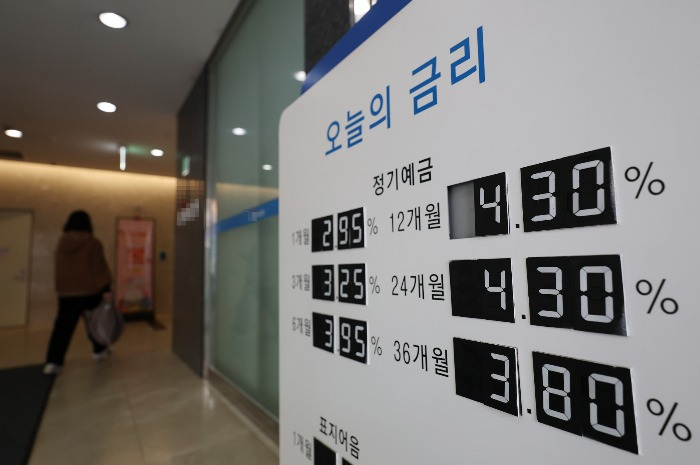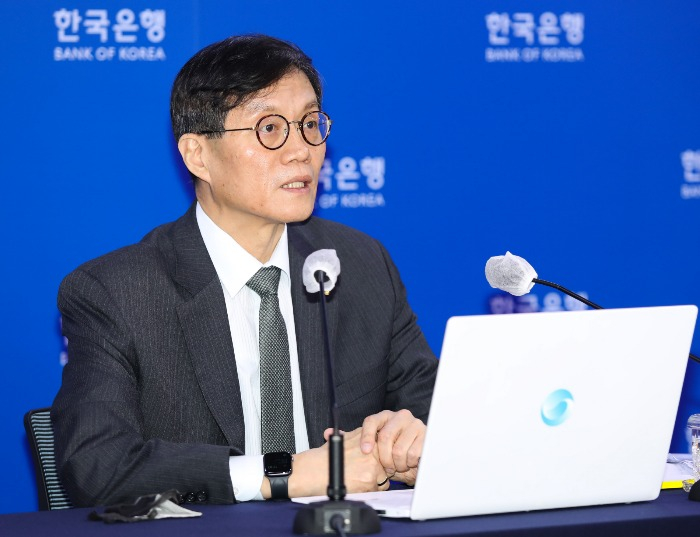Economy
Treasury yield falls signal BOK's looser grip on inflation
Investors bet on the end of the monetary tightening cycle later this year, as additional rate hike may dampen the economy
By Feb 13, 2023 (Gmt+09:00)
3
Min read
Most Read
S.Korea's LS Materials set to boost earnings ahead of IPO process


NPS to commit $1.1 billion to external managers in 2024


Samsung Heavy Industries succeeds autonomous vessel navigation


Samsung shifts to emergency mode with 6-day work week for executives


Korean battery maker SK On expects business turnaround in H2



The yield on South KoreaŌĆÖs benchmark three-year treasury bonds has stayed below the base rate for a month, out of sync with monetary policies focused on curbing inflation.
The inverted yield curve indicates that market participants are skeptical about the Bank of Korea's commitment to keeping interest rates higher and the effectiveness of its monetary policy. That could leave the central bank with limited policy levers to fight inflation.
ŌĆ£Market interest rates tend to move in sync with the base rate, but that formula is not working now,ŌĆØ said a former senior monetary policymaker.
ŌĆ£It is worrisome that the difference between the views of monetary authorities and market participants is widening in the era of high interest rates.ŌĆØ
The Bank of Korea lifted the base rate, equivalent to the seven-day repurchase agreement rate, to a 14-year high of 3.5% on Jan. 13. The 25-basis-point hike marked the central bankŌĆÖs seventh rate move since it began the tightening policy in April 2022.
But local financial markets moved in the opposite direction. The three-year treasury yield dropped 9.7 basis points to 3.369% the same day. It declined to as low as 3.11% on Feb. 3, before crawling back up to 3.398% on Feb. 10.
Market participants took note of Bank of Korea Governor Rhee Chang-yongŌĆÖs remarks, rather than the rate move.
Last month, he struck a more moderate note than his previous ones, signaling a further cut in its economic growth forecast only two months after revising it downward.
In a statement released after the January rate decision, the BOK said it needed to maintain its tightening stance. Investors interpreted the line as a shift from the hawkish stance, however, under which the central bank had said it would continue to raise interest rates for some time.
In addition to the policy shift expectation, abundant liquidity in the short-term funding market drove the short-term bond yield even lower.
Money market funds (MMFs) have drawn over 16 trillion won ($12.5 billion) since the start of this month. The money inflows into the short-term funds reflect the tendency of financial institutions to place funds into MMFs in the first few months of the year.
Moreover, some retirement funds put the money they had not yet deployed late last year into MMFs.

Since August 2021, the BOK has been bumping up the base rate for one and a half years straight. The consecutive rate hikes have curbed demand by both households and companies.
With market interest rates falling below the policy rate, however, doubts are arising as to whether the BOKŌĆÖs additional rate hikes could rein in inflation.
ŌĆ£Market expectations are that the BOK is nearing the end of its rate hike cycle and will cut interest rates at the end of this year or early next year,ŌĆØ said a market participant.
ŌĆ£The BOK has left the door open for more rate hikes, but the market consensus is that a further rate hike will put a damper on the economy."
The same may be said for the US, UK, Canada and Sweden. In the US, 10-year Treasuries trade below those of three-month and two-year Treasuries.
Last week, US Federal Reserve Chairman Jerome Powell said that interest rates may need to move higher than expected if economic strength threatens the FedŌĆÖs progress at lowering inflation, according to Reuters.
His remarks were made in response to the upbeat January jobs report.
InvestorsŌĆÖ anticipation of a faster turn to rate cuts could force the Fed to raise rates more than it otherwise would, The Wall Street Journal wrote earlier this month.
Write to Mi-Hyun Jo at mwise@hankyung.com
Yeonhee Kim edited this article
More to Read
-
 EconomyKoreaŌĆÖs inflation picks up 5.2% in January on high utility prices
EconomyKoreaŌĆÖs inflation picks up 5.2% in January on high utility pricesFeb 02, 2023 (Gmt+09:00)
3 Min read -

-
 EconomyKorea inflation at 7-mth low; BOK may slow rate hike pace
EconomyKorea inflation at 7-mth low; BOK may slow rate hike paceDec 02, 2022 (Gmt+09:00)
2 Min read -
 Central bankBOK takes 25-bp rate hike as won rebounds against dollar
Central bankBOK takes 25-bp rate hike as won rebounds against dollarNov 24, 2022 (Gmt+09:00)
2 Min read
Comment 0
LOG IN


